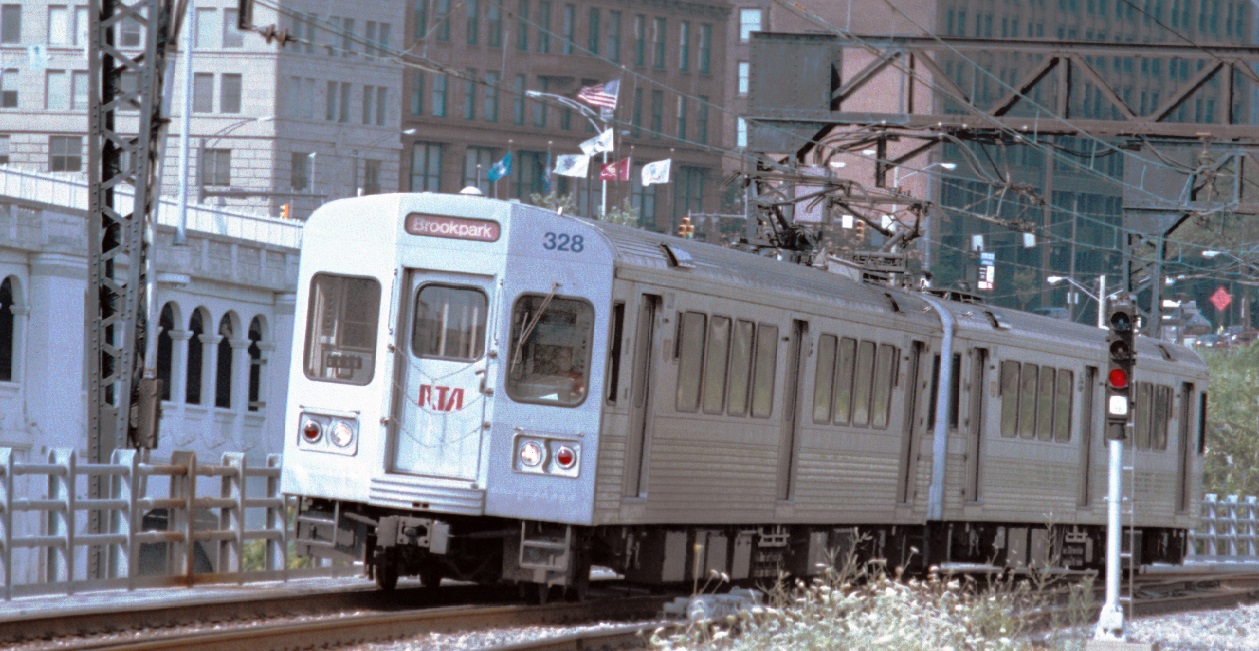May 19, 2016
CLEVELAND – The Greater Cleveland Regional Transit Authority (RTA) is participating in National Infrastructure Week, May 16-23, to bring broader attention to the need to consistently invest and maintain the nation’s aging infrastructure, including one of America’s most valuable assets – its public transportation systems.
Today, RTA was joined by Greater Cleveland Partnership and other civic partners at the Cuyahoga River Viaduct to get a rare vista of the City and learn more about RTA’s $250 million in unfunded capital needs, including bus, track, signal, stations, substations and bridges. An additional $280 million remains unfunded to replace an aging rail fleet.
The RTA Board of Trustees recently approved a $350,000 contract to evaluate the Cuyahoga Viaduct Bridge. It was built in 1929 and spans 3,395 feet, at a maximum height of 94 feet above the Cuyahoga River.
"RTA's most valuable asset"
“Many people don’t know that RTA is responsible for the maintenance of this Viaduct and 85 other bridges all across Greater Cleveland. It costs $5 million-$6 million a year to maintain these bridges. This bridge is RTA's single, most valuable asset. It is safe, but like all infrastructure, it needs ongoing regular maintenance to keep it safe and serviceable,” said RTA CEO and General Manager Joe Calabrese.
"RTA is working with ODOT, community partners and other civic leaders to bring broader attention to the need to increase investment in the nation’s aging infrastructure," Calabrese said. "Over the last several years, our nation's investment in infrastructure has fallen well below the investments being made by many other nations. As a result, we are not catching up with our current needs. and are in fact, falling farther behind."
“Investment in our infrastructure, particularly in public transit, is a key ingredient to help people get to jobs and to drive growth in our communities,” Calabrese said.
“According to the American Society of Civil Engineers, America gets a D+ on the report card for Infrastructure and D for Transit. That’s obviously not something to be proud of,” he said.
Cleveland Mayor Frank G. Jackson agreed.
"Sustained transit funding is critical to the vitality of Cleveland," he said. "Repairing and improving our city's infrastructure is not an option if we are to remain a world-class city and continue to attract the growth and development that drives jobs and opportunities."
National funding gap could grow to $1 trillion
That same report indicates that the Surface Transportation Infrastructure funding gap for the next 10 years has grown from $908 billion to $1.10 trillion.
“We will not have the transportation network our community and our nation needs until everyone has access to safe, affordable and reliable public transportation that connects people to jobs, commerce and services, bringing communities together more efficiently,” said Valarie J. McCall, RTA Board member and Chair of American Public Transportation Association (APTA).
Nationwide, according to the latest data from 2013, the Federal Transit Administration (FTA) says that more than 40 percent of buses and 25 percent of rail transit assets were in marginal or poor condition. The FTA also notes there is an $86 billion backlog in deferred maintenance and replacement needs, McCall said.
In Cleveland, RTA currently has $500 million in unfunded infrastructure needs in track, signal, propulsion power, rail car and bus needs.
“Our system is safe, but inadequate funding to renew and modernize our infrastructure is making it harder and harder to guarantee the safety and reliability of our system,” Calabrese said.
A study released by ODOT in 2015 showed that more than one-third of the 2,700 buses in the State are being operated beyond their useful life.
RTA's most critical infrastructure project is a needed $25 million upgrade to the tracks in Tower City. Last upgraded in 1990, these tracks represent the heart and soul of RTA's 75-mile rail network, Calabrese said.
“All rail lines go through Tower City. If the tracks in Tower City go down, the entire rail system goes down. Today, only one-third of the needed funding has been identified.”
Background
This year’s fourth annual National Infrastructure Week brings together America’s business, labor and policy-making leadership. It includes more than 100 affiliate organizations from all sectors of America’s economy and society.
RTA is participating as a member of APTA, which is an affiliate member of National Infrastructure Week (NIW). NIW is the largest, most diverse, non-partisan coalition of organizations dedicated to strengthening America by rebuilding the nation’s infrastructure.
National Infrastructure Week includes events, media coverage, education and advocacy efforts to elevate infrastructure as a critical issue impacting all Americans.
Media contact
216-566-5211
216-390-9605, cell
